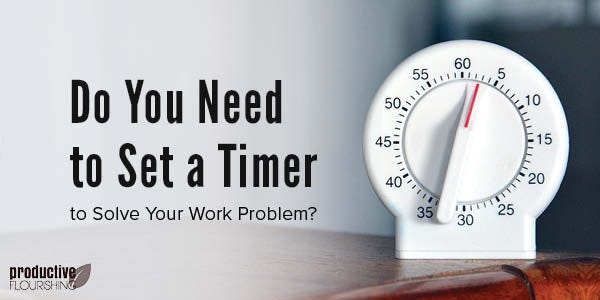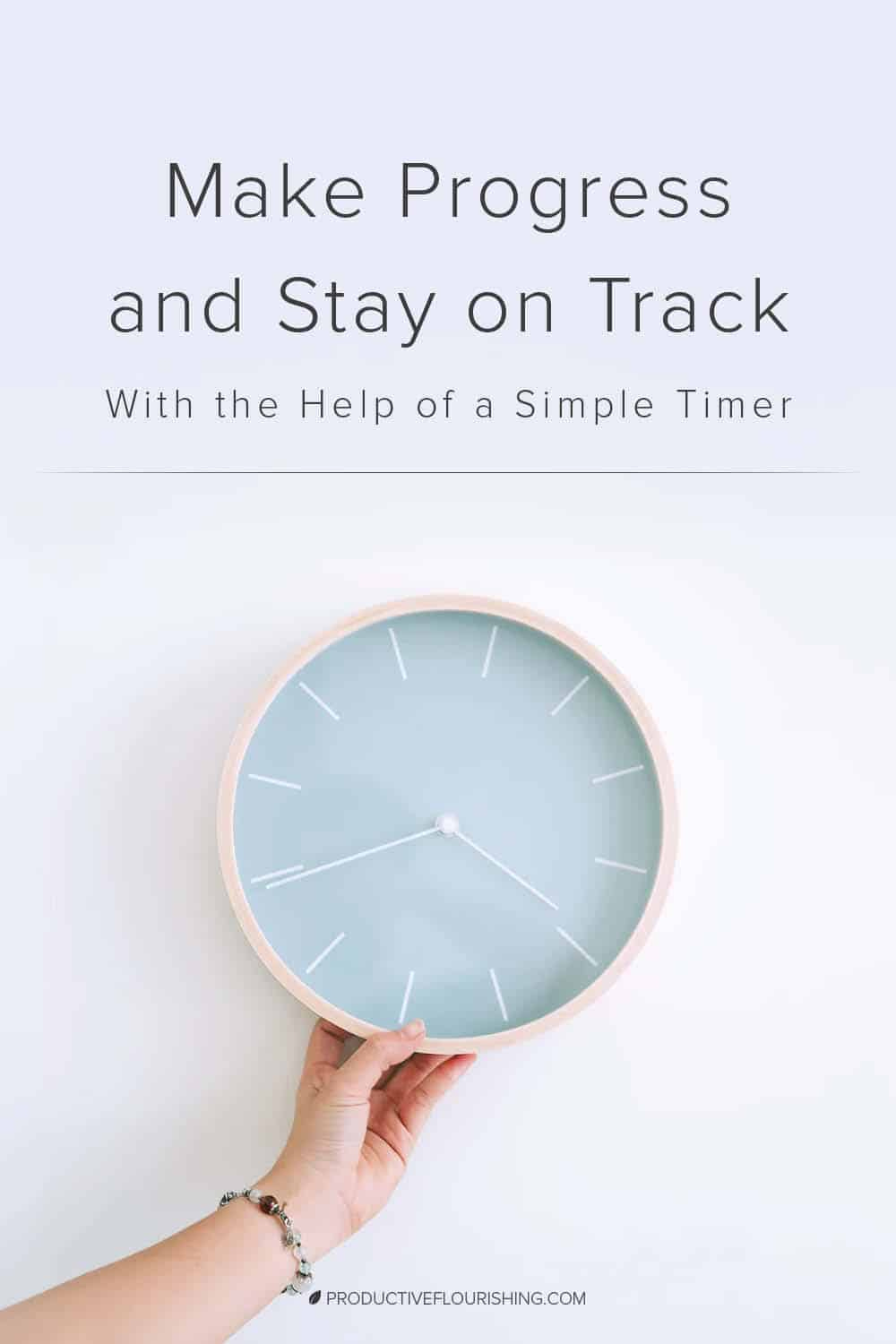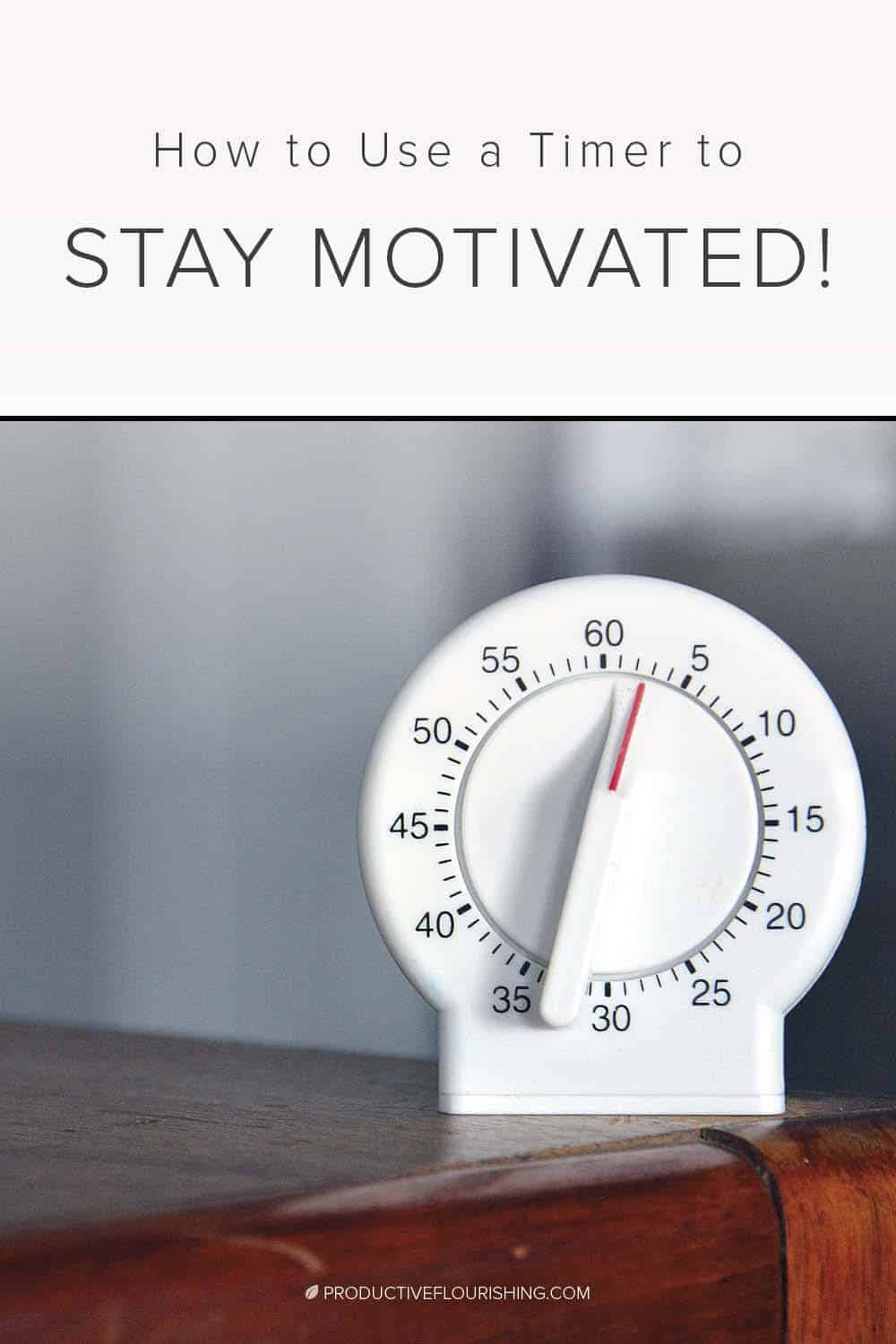Do You Need to Set a Timer to Solve Your Work Problem?

Editor's note: This is a guest post by Danielle LaSusa PhD.
It was hopeless. I was a fraud, an imposter. And I had the evidence all around me. Like, literally. I was sitting in it — slumped on the floor, encircled by a dozen, splayed open, unread books. Pages of black typeset stared up at me. They mockingly whispered that I had no business pretending to call myself an expert in anything.
I was lost yet again in what I would come to refer to as “The Great Footnote Chase.” It was an unproductive head game in which I avoided writing my doctoral dissertation by referring to a book, feverishly reading two pages, finding a footnote that referenced a new book, and repeating until, hours later, I found myself here, on the floor, without having made any progress.
Thankfully, I soon figured a way out of this cycle. I learned that “The Great Footnote Chase” was not an indictment on my character, intelligence, will, or creativity. It was a work problem for which I could find a solution. And the solution all started with one simple trick that got me out of the chase and made me more productive than I had ever been.
The Magic of an Egg Timer
Things changed for me when I was introduced to a revolutionary technique involving a sophisticated piece of technology: an egg timer. Desperate for help, I was at my friend and fellow grad-student Joan’s house for a work date. She grabbed an egg timer from the kitchen and plunked it down on the table.
“Ok,” Joan said. “What are you going to accomplish in the next 20 minutes?”
Twenty minutes? Uhh…. I had managed to eek out a few haphazard pages over the last several weeks. What could I do in just 20 little minutes?
“Write one paragraph?” I suggested.
Joan nodded in affirmation and said that she was going to revise one page of her dissertation. She turned the timer crank for 20 minutes.
I had typed all of two sentences when the Chase beckoned. I was sure I didn’t know enough about my topic. I needed to look up more information, but I hadn’t brought my stack of books with me.
I glanced at the timer. Thirteen minutes left. Joan was quietly tapping away on her keyboard. It would be dumb to just sit there doing nothing, so I decided I would write what I could, and then go back later and fill in the missing information and references.
When the timer pinged, I had, to my shock, finished a full and, come to think of it, pretty good, paragraph. Turns out I knew more than I thought.
The spell of The Great Footnote Chase had been broken, and I had found the key to getting my work done. PRODUCTIVE FLOURISHING
Solving My Work Problem
Joan told me that she got the timer trick from academic psychologist Virginia Valian’s articles “Learning to Work” and “Solving a Work Problem.” Both predate Francesco Cirillo’s more well-known “Pomodoro Technique” — which involves a kitchen timer shaped like a tomato (or pomodoro in Italian) — but the idea is the same. Set a timer for a short amount of time and do focused work until it rings.
Since learning the timer method, I’ve regularly used it over the last ten years. It has helped me not only finish my dissertation but also write my TEDx talk, create my website, and yes, write this very blog post.
Here are some best practices I’ve developed over the years:
1. When the timer is on, you do nothing but work.
Focus. No checking your email or social media, responding to texts, getting up to get coffee, going to the bathroom, or, hey, maybe lentil soup for dinner — are there carrots in the fridge? I better go check.
Stop. You can do all those things after the timer goes off. By the time it does, you’ll have forgotten about the carrots, gotten in the flow of the work, and be ready to do another 20 minutes.
2. Don’t set a timer for more than 30 minutes.
You can, and should, vary your timer according to your energy and your resistance to the work. Valian admits that for a certain section of her thesis she knew was going to be exceptionally challenging, she set her time for a mere five minutes!
Personally, I never set a timer for more than 30 minutes. It is too easy to get stuck, distracted, or tempted to check my email, just once, because I still have 15 minutes left. The next thing I know, the timer chimes, and I’m hypnotized by a timelapse video of someone making homemade Cheetos.
3. Keep your breaks short.
Don’t go overboard on breaks between timer sessions. Twenty minutes of work and an hour of Instagram will thwart your progress at worst and derail your flow at best. Ten minutes is enough to stretch your legs, refresh your coffee, check your messages, and get back to work. If you need to set a timer for your breaks, do that, too.
Also, don’t think that you have to stop working just because the timer goes off. If you’re in a rhythm, go with it, and do another round.
4. Work with a (motivated) buddy.
Working with a friend who is equally motivated to get their work done, or what Valian calls a “work ally,” is helpful to staying on track. Set a goal for what you will achieve in a timed session and report on how you did when time is up.
I wrote most of my dissertation sitting across from my dear friend Sara, phone timer counting down between us, at our favorite local coffee shop. When I moved away, we started to meet online. We’d each set a timer and check in with each other before and after our timers went off. I still consider her my best work ally.
5. Track your work time.
Keep a little notepad on your desk to write down your start and stop time for each session, and tally up how much time you actually spend working. (Note: This does not require you spending an hour researching the best time tracking app. Pen and paper work just as well.) Writing down your time and progress will help you understand how long tasks actually take and when you are most productive.
I found that the amount of real, focused, intensive work in a seven-hour work day totaled about three to three and half hours. The story that independent intellectual or creative work should be done eight, 10, or 12 hours a day is unrealistic and often counterproductive.
6. Work (nearly) everyday, even if it’s only 15 minutes.
You can actually get a lot done in 15 focused, intentional minutes, even if it’s just reviewing what you’ve already done and planning for the next work session. The longer you go on ignoring your work, the harder it is to start back up again and, when you do, to remember where the hell you left off.
When I started to make real progress on my dissertation, I was at the desk five to six days a week, even if I had other things going on. Checking in every day kept up my momentum so that I didn’t have to spend an hour of work time trying to remember and re-read what I wrote two weeks ago. Visiting the work daily kept the ideas percolating in the background rather than them growing stagnant and being forgotten.
Perhaps the most essential thing I learned while writing my dissertation was to think of resistance, distractibility, and avoidance as a work problem for which a solution can be found. Losing focus is not a character flaw or an insurmountable roadblock. The timer trick is just one strategy that happened to be a key solution for me as it allowed and allows me to focus on the task at hand and persist through the resistance, self-criticism, and doubts. (Tweet this.)
You may need to find your own best practices for solving your work problem. Experiment. Use what works and change what doesn’t. And remember that very simple tools, like a plain old egg timer, can make a world of difference.



